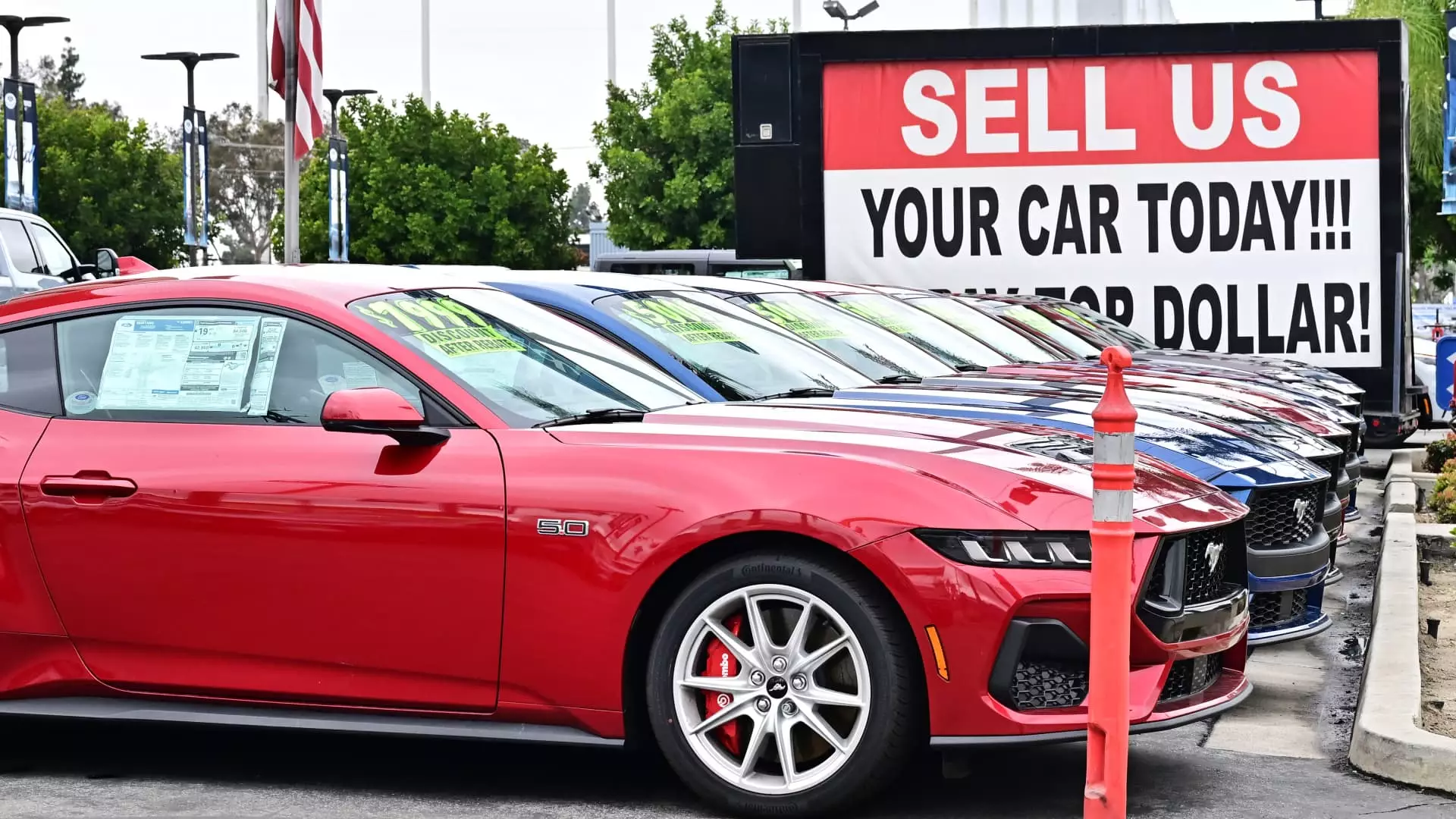The used car market is a chaotic space, punctuated by unsettling swings in pricing that perplex both buyers and sellers. In May, prices showed a decline of 1.5% following a surge in April, yet they still stand a firm 4% higher year-on-year. This seemingly paradoxical behavior raises questions: Why aren’t prices aligning more closely with wholesale metrics? One theory posits that millennials and Gen Z are choosing to hold onto their vehicles longer, leading to tight inventory levels and increasing demand. A drop in available vehicles naturally leads to upward pressure on prices, or at least the continuation of inflated costs. So, while the market stabilizes, the conditions that drive consumer behavior remain volatile and unpredictable.
Impact of Tariffs on Consumer Psychology
The political landscape, punctuated by President Trump’s tariffs on imports, certainly contributes to the complexities of pricing in the used vehicle sector. The 25% tariffs on new imports don’t directly affect the second-hand market, yet consumers are influenced by the fear of escalating costs. This anxiety drives them to purchase used vehicles proactively, fearing even steeper price hikes in the future. In today’s world, emotions shape the marketplace as much as economic principles do. Consequently, this tendency for consumers to buy out of fear—rather than genuine need—only serves to add layers of instability to vehicle pricing.
Stagnation in Retail Prices Creates a Quagmire
Despite the fluctuations in wholesale prices, retail prices for consumers seem to languish in a stagnant quandary. In May, retail used vehicle sales fell by 3% compared to April, signaling a troubling decline in consumer confidence or purchasing power. Strikingly, year-over-year comparisons suggest more robust demand, yet inconsistency raises flags. The disconnect between wholesale and retail marketplaces could indicate that dealerships are clinging to outdated pricing strategies or inadequately responding to shifts in consumer behavior. This stagnation does not bode well for aspiring car owners hoping to make a move, leading to a less dynamic market overall.
The Lasting Impacts of a Pandemic-Driven Market
The remnants of the pandemic loom large over the automotive industry. Production line slowdowns and global supply chain issues have curtailed new vehicle availability, resulting in consumers hanging onto their older makes and models longer than might have been customary. With reduced manufacturing, the second-hand market feels the tight squeeze emotionally as well; buyers are forced to confront higher prices for used cars because of their withheld decisions. This manufactured scarcity creates a bubble that could burst at any moment, leading to potentially disastrous financial repercussions for hopeful car buyers and dealers alike.
Is Stability on the Horizon?
Experts from Cox Automotive have begun to note a tentative return to stability in used vehicle prices, although this follows years of erratic behavior. The 2024 forecast suggests a gradual calming of the market; however, the interdependency of new and used vehicle sales means that external economic factors—including tariffs, production levels, and consumer sentiment—will invariably affect the market’s future trajectory. While some might suggest optimism is warranted, it’s crucial to remain skeptical. The used vehicle market has long been a barometer reflecting broader economic trends, and as such, one must approach any hopeful forecasts with careful consideration and scrutiny.


Leave a Reply